Portraits in leadership 140 years of UTokyo presidents and notable international award laureates

Portraits in leadership
140 years of UTokyo presidents and notable international award laureates
Who shaped UTokyo over the last 140 years? We present to you the 28 UTokyo presidents who headed the University administration, along with 26 notable professors who accomplished brilliant achievements, leaving a mark in the world of academia. Behind the portraits of these great pioneers, there lies a long history of education and research at the University.
1. Hiromoto Watanabe
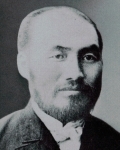
He became the first president in 1886. He is the only president to date who was not originally a faculty/staff member.
2. Hiroyuki Kato
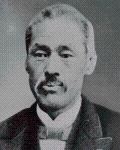
After serving as the general manager of UTokyo and a member of the Chamber of Elders (Genrōin), he became the second president of the University in 1890.
3. Arata Hamao
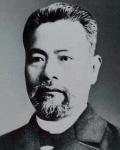
He became the third president in 1893, and the eighth president in 1905. He is known as the “construction president” for pursuing campus infrastructure projects.
4. Masakazu Toyama
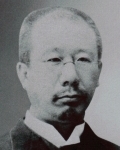
He became the fourth president in 1897. He was the first to read the characters “万歳” as “banzai.”
5. Dairoku Kikuchi
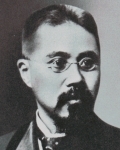
He became the fifth president in 1898. Mt. Dairoku in the University of Tokyo Hokkaido Forest owes its name to him.
6. Kenjiro Yamakawa
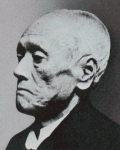
He served as both the sixth and the ninth president, giving him the longest total time in office to date.
7. Naokichi Matsui
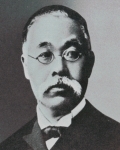
He became the seventh president in 1905 (in office for 13 days).
8. Yoshinao Kozai
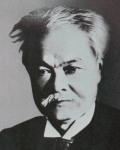
He became the 10th president in 1920. His statue is in the University Library for Agricultural and Life Sciences, and there is a field named after him (Kozai-ga-hara) in the Fuji Iyashinomori Woodland Study Center.
9. Kiheiji Onozuka
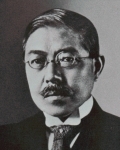
Pioneer of modern Japanese political science. He became the substitute president while President Kozai was recovering from illness, and eventually became the 11th president in 1928.
10. Mataro (Matao) Nagayo
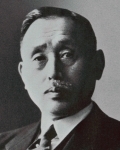
He became the 12th president in 1934. After the completion of the University of Tokyo Baseball Club Issei Dormitory (野球部一誠寮), he wrote and framed in the lobby a calligraphy scroll of the dormitory’s name. He deliberately left out one stroke of the character “誠” to motivate the students, saying that he would fill it in when they won the championship.
11. Yuzuru Hiraga
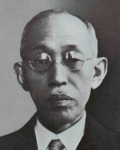
He became the 13th president in 1938. Nicknamed the “warship president,” he is remembered for his efforts in establishing the Second Faculty of Engineering.
12. Yoshikazu Uchida
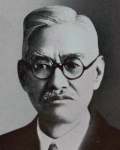
He became the 14th president in 1943. He was heavily engaged in the negotiations with the US military and prevented the requisition of the University.
13. Shigeru Nanbara
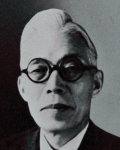
He became the 15th president in 1945. He reformed the education system whilst restoring hope for the Japanese people after the war, and led the way to the establishment of the post-war guidelines for universities.
14. Tadao Yanaihara
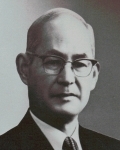
He became the 16th president in 1951. He staunchly defended university autonomy and academic freedom, even facing confrontation with the police at times.
15. Kunihiko Kodaira
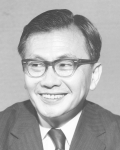
He was awarded the Fields Medal in 1954 for his work on the theory of harmonic integrals. He is the first Japanese to receive this prize.
16. Seiji Kaya
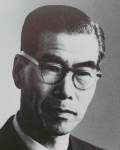
He became the 17th president in 1957. A term he coined at a graduation ceremony, “chiisana shinsetsu” (small kindness), went on to start a major movement in Japan, the Small Kindness Movement.
17. Kazuo Ōkōchi
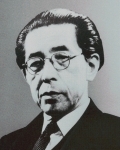
He became the 18th president in 1963. A phrase he said in the farewell address at a commencement, “be a lean Socrates rather than a fat pig,” triggered a wide-ranging debate.
18. Yasunari Kawabata
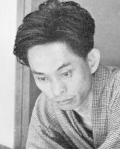
He won the Nobel Prize in Literature in 1968. His Nobel Lecture, “Japan, the Beautiful and Myself,” was much talked about.
19. Ichirō Katō
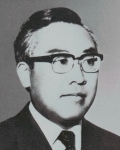
He set out to quell the University of Tokyo Protests (Todai funsō) as acting president, and went onto become the 19th president in 1969 (the youngest president to date).
20. Kentaro Hayashi
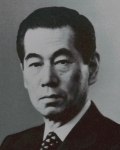
He became the 20th president in 1973. He was famously confined in a building on campus by student protesters soon after he was named dean of the Faculty of Letters, during which time he engaged in a 170 hour-long bargaining session and did not give in.
21. Leo Esaki
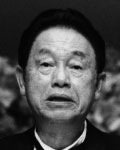
He won the Nobel Prize in Physics in 1973 for his discovery regarding tunneling phenomena in semiconductors and superconductors. He was later awarded the Japan Prize in 1998.
22. Eisaku Sato
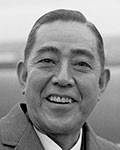
He was awarded the Nobel Peace Prize in 1974 for his proposal of the Three Non-Nuclear Principles.
23. Takashi Mukaibo
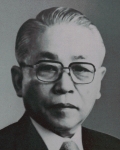
Having served as the dean of the Faculty and Graduate School of Engineering, he became the 21st president in 1977, the 100th anniversary of UTokyo.
24. Ryuichi Hirano
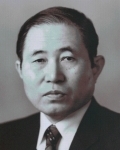
He became the 22nd president in 1981. At a matriculation ceremony, he spoke passionately about the importance of taking detours from time to time.
25. Wataru Mori
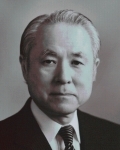
He became the 23rd president in 1985. He instructed students at a matriculation ceremony not to rely too much on global culture.
26. Kiyoshi Ito
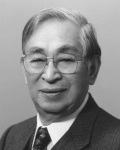
He won the Wolf Prize for his contributions to probability theory in 1987.
27. Kenzo Tange
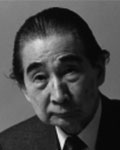
In 1987, he became the first Japanese to win the Pritzker Architecture Prize.
28. Akito Arima
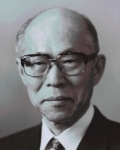
He became the 24th president in 1989. He implemented a strategic focus on graduate schools, helping to shape them into how we see them today.
29. Hiroyuki Yoshikawa
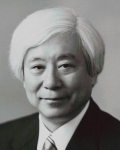
He became the 25th president in 1993. He won the Japan Prize for helping to establish the robotics industry, among other achievements.
30. Fumihiko Maki
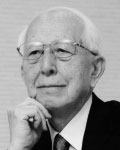
He won the Pritzker Architecture Prize for the intellectual yet artistic concepts expressed through his work.
31. Kenzaburo Oe
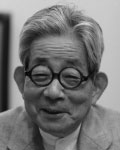
He won the Nobel Prize in Literature in 1994 for creating an imagined world where myth and reality intersect.
32. Masao Ito
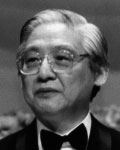
He was awarded the Japan Prize in 1996 for identifying the basic functions and neural mechanisms of the cerebellum.
33. Shiguehiko Hasumi
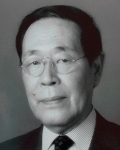
He became the 26th president in 1997. He addressed the students at a matriculation ceremony, saying that their rigorous intellectual battle has just begun.
34. Takashi Sugimura
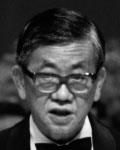
He was awarded the Japan Prize in 1997 for establishing the basic concept of what causes cancer.
35. Kimishige Ishizaka
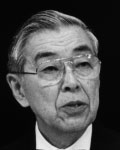
He was awarded the Japan Prize in 2000 for discovering the antibody class Immunoglobulin E and for identifying the mechanism that causes allergic reactions.
36. Takeshi Sasaki
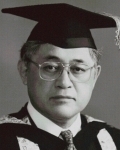
He became the 27th president in 2001. He established the University of Tokyo Charter, which is considered the constitution of the University post-incorporation.
37. Masatoshi Koshiba
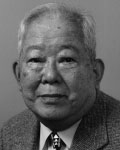
He won the Nobel Prize in Physics in 2002 for his contribution to the discovery of neutrinos.
38. Mikio Sato
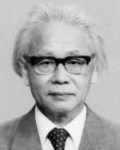
He was awarded the Wolf Prize in 2003 for his creation of algebraic analysis.
39. Seiji Ogawa
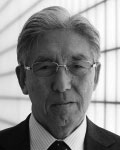
He won the Japan Prize in 2003 for discovering the basic principle for functional magnetic resonance imaging (fMRI).
40. Kenichi Honda
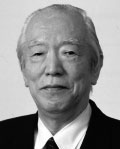
He won the Japan Prize in 2004 along with Akira Fujishima for their discoveries such as the photocatalytic properties of water.
41. Akira Fujishima
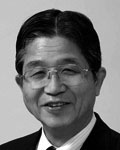
He won the Japan Prize in 2004 along with Kenichi Honda for their discoveries such as the photocatalytic properties of water.
42. Hiroshi Komiyama
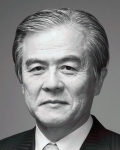
He became the 28th president in 2005. His action plan centered on the “structuring of knowledge” and “autonomous and decentralized yet cooperative systems,” and declared his intentions to make UTokyo the number one university in the world.
43. Yoichiro Nambu
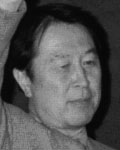
He won the Nobel Prize for Physics in 2008 for the discovery of spontaneous broken symmetry.
44. Junichi Hamada
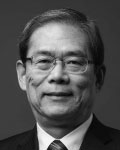
He became the 29th president in 2009. His message, that UTokyo students should “be tough,” became a topic of conversation.
45. Ei-ichi Negishi
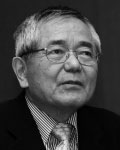
In 2010, he was awarded the Nobel Prize in Chemistry for palladium-catalyzed cross couplings.
46. Toyo Ito
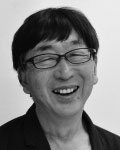
In 2013, he was awarded the Pritzker Architecture Prize for his innovative architecture.
47. Makoto Gonokami
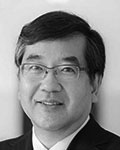
He became the 30th president in 2015. He declared his intention to make UTokyo a university that fosters “knowledge professionals” and contributes to humanity.
48. Takaaki Kajita
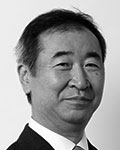
He won the Nobel Prize in Physics in 2015 for the discovery of neutrino oscillations.
49. Tomoko Ohta
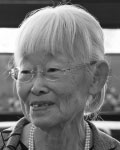
She received the Crafoord Prize in 2015 for the “nearly neutral theory of molecular evolution.”
50. Yutaka Takahasi
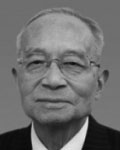
He received the Japan Prize in 2015 for his accomplishments such as his contribution to the development of innovative concepts in river basin management.
51.–53. Akira Isogai, Tsuguyuki Saito, Yoshiharu Nishiyama



They received the Marcus Wallenberg Prize in 2015 for their research on the catalytic oxidation of cellulose nanofiber.
54. Yoshinori Ohsumi
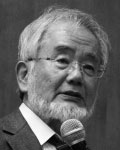
He won the Nobel Prize in Physiology or Medicine in 2016 for his discoveries of mechanisms for autophagy.
About the notable international awards:
Those featured here are University-affiliated recipients of the Nobel Prize, the Woolf Prize, the Crafoord Prize, the Japan Prize, the Fields Medal, the Pritzker Architecture Prize, and the Marcus Wallenberg Prize. (Some of them have received multiple awards.)
Photo credits: Research Institute for Mathematical Sciences, Kyoto University (26, 38); The Japan Prize Foundation (21, 32, 34, 35); Graduate School of Mathematical Sciences (15); Graduate School of Engineering (27, 30, 39, 40, 41, 46, 50); Graduate School of Science (37, 43); Graduate School of Agricultural and Life Sciences (49, 51-53)
Note: This article was originally printed in Tansei 36 (Japanese language only). All information in this article is as of March 2018.






